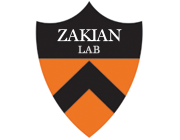Plasmid associations with residual nuclear structures in Saccharomyces cerevisiae.
Publication Year
1988
Type
Journal Article
Abstract
Acentric yeast plasmids are mitotically unstable, apparently because they cannot freely diffuse after replicating and therefore are not included in the daughter nucleus. This behavior could result if plasmids remain attached to structural elements of the nucleus after replicating. Since DNA replication is believed to take place on the nuclear matrix, we tested whether there was a correlation between the mitotic stability of a given plasmid and the extent to which it was found associated with residual nuclear structures. Residual nuclei were prepared from yeast nuclei by extraction with either high salt, 2 M NaCl, or low salt, 10 mM lithium diiodosalicylate (LIS). Hybridization analysis was used to estimate the fraction of plasmid molecules remaining after nuclei were extracted. We examined the extent of matrix association of three ARS1 plasmids, Trp1-RI circle (1.45 kb), YRp7 (5.7 kb) and p lambda BAT (45.1 kb) with mitotic loss rates ranging from 3-25%. In addition we examined the matrix binding of the endogenous 2 micron plasmid and the 2 micron-derived YEp13 which is relatively stable in the presence of 2 micron and less stable in cir degree strains. Among the ARS1 plasmids we observed a negative correlation between stability and matrix association, consistent with models in which binding to the nuclear matrix prevents passive segregation of ARS1 plasmid molecules. No such correlation was observed among the 2 micron plasmids. Among all plasmids examined there is a positive correlation between size and matrix association.
Keywords
Journal
Curr Genet
Volume
13
Issue
4
Pages
291-7
Date Published
04/1988
ISSN Number
0172-8083
Alternate Journal
Curr. Genet.
PMID
2839303

